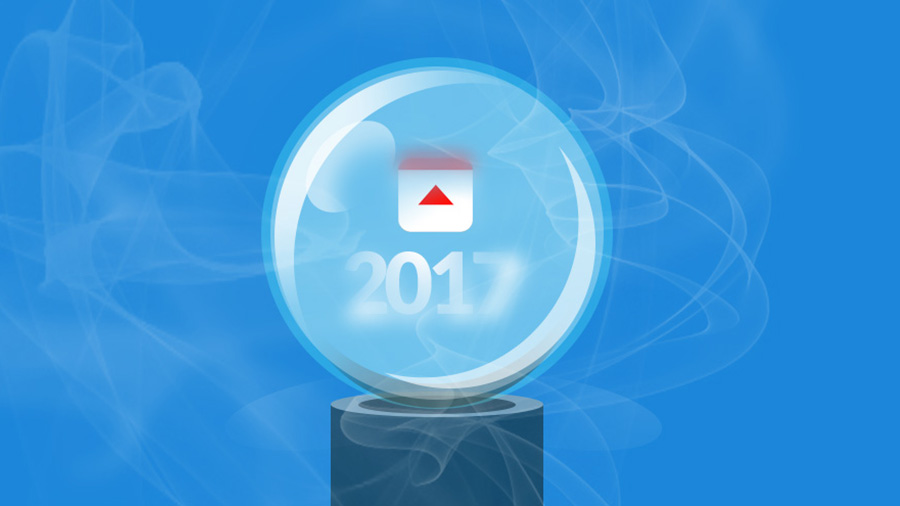As we just wrapped up a great 2016, it’s important for us to plant some flags for 2017. We’re constantly evolving and improving our platform, so clear milestones ahead of us can be both immensely helpful to guide our team toward shared goals, and also give customers a 2017 Fulcrum roadmap about where we’re headed strategically.
Like most SaaS products out there, we have a backlog of features, improvements, enhancements, and sidecar products a mile long that could keep us occupied for years. Our job as a product team is to curate and prioritize that list to create what’s best for our users and our business, doing so in a way that maximizes our own internal efficiency and our customers’ results.
Objectives for the new year
Laying down some target goals will help us keep ourselves accountable and to measure our successes throughout the year as we continue product growth. Let’s walk through some of the major initiatives we’re targeting for this year.
Enterprise
One of our major initiatives for this year is to make Fulcrum a better solution for Enterprise customers. We have large, distributed organizations using Fulcrum for continuous operations, and they’re getting bigger. With scaling deployments, there are important areas to improve to give these types of groups what they need to truly take full advantage of what Fulcrum brings to their organizations. Many of the things in our pipeline fit this category, and we’ve gotten feedback on quite a few from our customer base — things like single sign-on, team management / security groups, encryption, and more. One of our top goals this year is to roll out Enterprise plans to enable scaling for large organizations.
Workflows
Setting up apps and business rules and collecting data within them is a solid foundation in Fulcrum today. One area to bring more value to customers is in improving information flows for after data is captured. Tons of our customers have multi-step workflows for data they collect in Fulcrum. Here’s an example — you might have a “Site Issues” app for logging issues observed on construction job sites and a “Work Orders” app to create work orders for maintenance crews to tackle. We plan to build a framework to create custom business rules for handling multi-step workflows. So in the above scenario, rules could be created to detect any Site Issue flagged as “critical” to auto-populate a Work Order in the other app.
The objective here is to increase the overall value of the work you’re doing with Fulcrum. The more can be done to leverage and enrich data from the field, the better the ROI for our customers. The boundary points between phases of the process are ripe for improvement to reduce friction across workflows.
Reporting and Analysis
In the five years since we launched, we’ve significantly evolved both our mobile applications and collection workflow. These advancements have exceeded what we initially thought possible when we set out to build Fulcrum. Every day, users collect thousands of photos and videos and sync tens of thousands of devices seamlessly. Together, they spend thousands of man-hours using the mobile apps to accomplish their tasks efficiently.
This progress raises an important question: what should users do with all this high-quality data? While we’ve always prioritized making data accessible in open formats, raw data alone may not suffice for many. Even though some customers prefer raw data, it doesn’t always meet broader needs.
To address this, we plan to roll out new platform functionality in 2017. These features will significantly enhance your ability to sort, filter, combine, analyze, and interpret your data as it’s collected.

While we don’t intend to compete with industry standard power tools for visualization like CARTO, Tableau, or Qlik, we want to increase accessibility to the answers you seek from your data, closer to the metal. So if you see an error in the data that needs additional field work or a follow up site visit, wouldn’t it be better if you could find it right then and there, and not downstream in another separate tool? Early this year we’ll be rolling out some great additions to make QA and report generation much more friendly for answer-seeking project managers. The faster you can know more about your field operations, the better.
Mapping
Since launch, we’ve had a strong presence in the GIS and mapping community thanks to enabling location-first in Fulcrum. Since smartphones have GPS built in these days, it only makes sense to geotag everything we can, with maximum accuracy (and simplicity for end-users). And since launch we’ve supported both offline data collection and custom basemaps to collect data over your own GIS data or raster imagery. While Fulcrum’s mapping capabilities work fantastically well for our users today, they can be even better. Our support for offline map layers is based on the MBTiles format, and while it’s an efficient standard for packaging raster map layers, it’s getting long in the tooth. Support in the tooling ecosystem for creating MBTiles is waning. It’s no longer as user friendly to build basemap packages as it once was.
We’re looking at overhauling this and adopting some new strategies for handling offline mapping. Several untapped areas still exist to make our mobile mapping capabilities stronger, and we plan to add some more good stuff outside of the layers functionality.
Community
This month we’re also announcing the beta release of a new product addition to support crowdsourcing projects — think emergency response, damage assessments, humanitarian projects, and the like. We often get requests from community organizations, charities, and non-profits to support community mapping projects, and we’ve built a product to meet those needs for select groups. It’ll also provide a means for publishing results as open data. We want to help community efforts gain support, with a platform for providing the tools to create and share. Stay tuned in the next 2 weeks for more on our work on this front!
2017 Fulcrum Roadmap: Ready, set, go
This is far from a comprehensive roadmap of changes and features, of course. These are initiatives we’ll be tackling over the next 12 months and beyond to evolve Fulcrum to the next level. We’ve got a list of other enhancements and improvements coming down the line that our users will love. Stay tuned as we kick off 2017 with some great stuff over the next couple of months.




